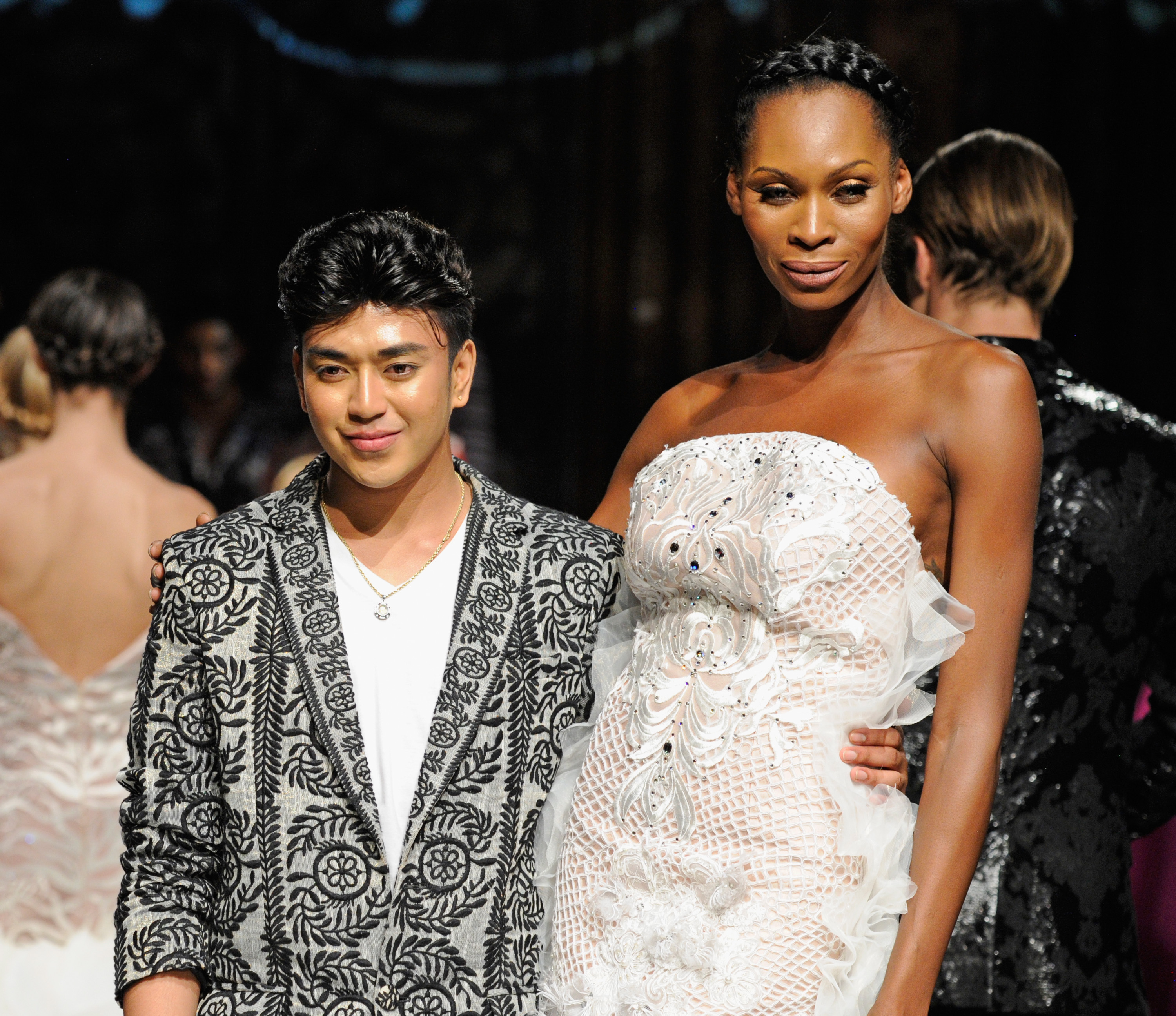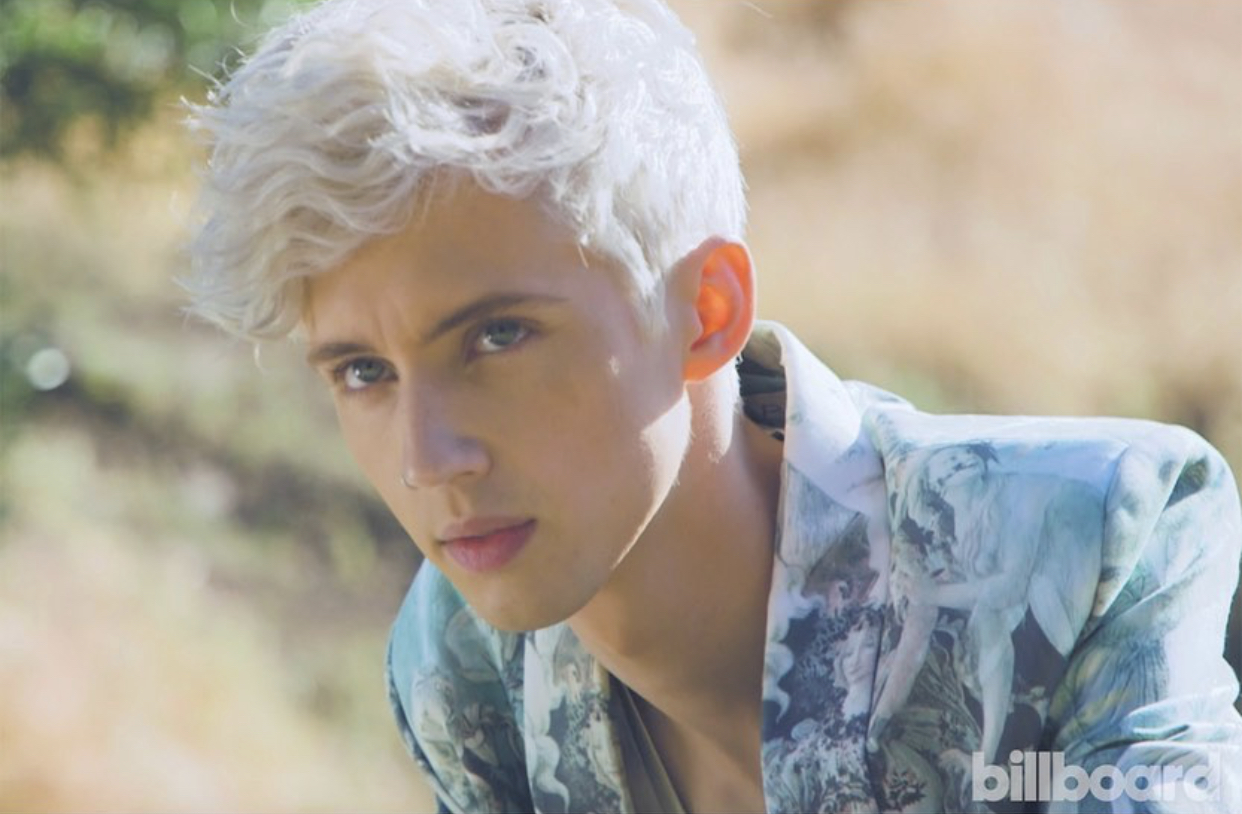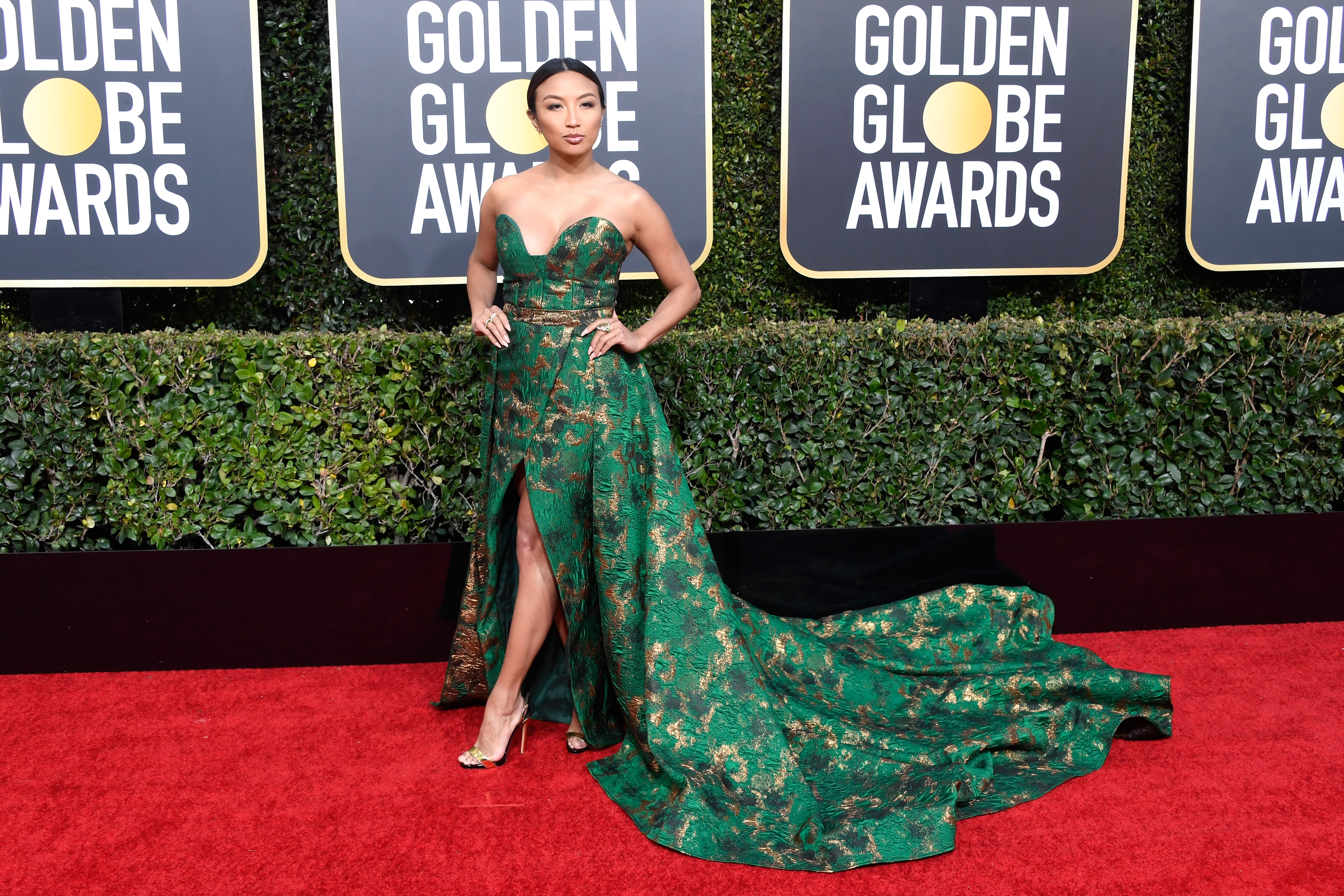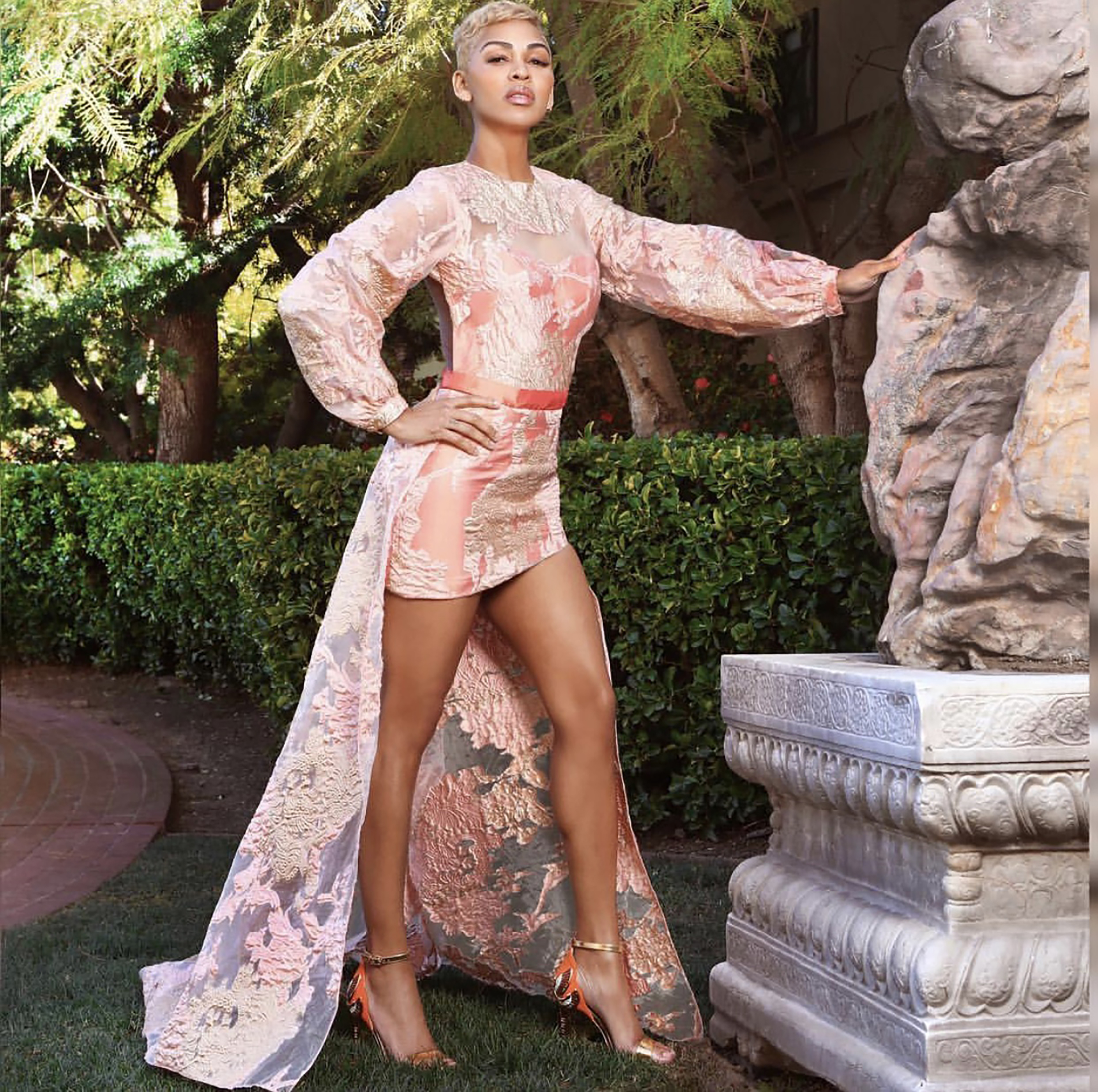
- Fashion
Project Runway’s Kenneth Barlis Faces the Challenges of Being a Young Gay Asian Fashion Designer

Kenneth Barlis aged 32, was born in Pagadian City in Zamboanga del Sur, Philippines. Barlis faced not only the challenges of being a young, gay Asian in the competitive industry of fashion, but also the hurdles of being raised by a single mom, Boots Barnes.
“Raised by a single mom, I matured at a very young age because I had to help her make both ends meet in every way I could,” Barlis said. “I learned the value of working hard and treating everyone the same way that I wanted to be treated.”
“At a very young age, I learned how to dream big for my family, maintain a great relationship with good people around us, and work hard with integrity because my mom keeps reminding us that good things happen to good people.”
The turning point in his life came at 17, when he decided to pursue fashion. Growing up in a Muslim community and culture in Mindanao, he was surrounded by people who mixed colors and patterns. He shared, “It was normal to them. Now that I am a fashion designer, I am more of a risk-taker in terms of that aspect. I use that influence with my fresh and modern take and make it my own.”
Nine years ago, Barlis started his atelier in San Diego: Kenneth Barlis, with a fashion voice that is clean, modern, bold, and sophisticated.

At 15, he immigrated with his mom to the United States. In 2018, the talented immigrant launched his KB School of Fashion, where he started training models for pageants and runway shows. He has taught hundreds of young men and women and instilled in them the value that anything is possible through hard work and perseverance.
During the pandemic, Barlis was busy creating KB face masks to donate to local hospitals in San Diego and to raise funds for those who were affected by the pandemic. Below are excerpts of our interview with Barlis who was featured recently in the Project Runway reality TV show, season 19.
Why did you join Project Runway? How did that happen and how was your audition or interview if you had one?
I joined Project Runway for the platform they have to reach a global fashion enthusiast audience to get to know my brand and for the chance to win the cash prize of $250K.
The audition process started with a casting agent reaching out to me before the pandemic. I went through a series of online interviews with the panel of producers and executives.
After I did all the interviews, I went through a series of different background checks. From thousands of applicants, I made it to the top 16 who were the ones who made it to the TV show. It took us a few months to go through the entire application process, but filming was pushed back for a year because of the pandemic.
How was that experience – the good and the bad?
The experience was very life changing. It taught me how to be resilient and believe in my own skills. During this event, I experienced both bad and good. Bad because I personally experienced an Asian hate moment where I was humiliated for hours in front of all the crew, other designers, and entire executives. It affected me personally, mentally and my performance during the competition.

On the other hand, I also had a good experience because I was able to show the world who I really am as a person. I didn’t lose myself in the process of just wanting something.
What did you learn from that experience?
Some things truly stood out for me during this experience, and these are to trust my own instinct, believe in myself, and be good to others in any circumstances.
Would you join another similar show again? Why or why not?
Yes, of course! One hundred percent I will do another similar show again! I wouldn’t let one bad experience of doing a reality TV show stop me from learning and experiencing new things.
I believe, as an artist, you need to keep discovering yourself and pushing yourself out of your comfort zone to keep moving forward. Hopefully, on the next show, I can showcase more of my work, and you never know, maybe I will take the ultimate winner title.
You have dressed a number of Hollywood celebrities. What is it like to dress them? Anything memorable about them?
Some of the celebrities I have dressed in the past were singers Carrie Underwood, Janet Jackson, Halsey, Kehlani, Zara Larsson, Troye Sivan, Offset, rapper Iggy Azalea, actress-singers Laura Marano, Macy Gray, actors Dermot Mulroney, RuPaul, and MJ Rodriguez, social influencer and singer Bella Poarch, to name a few.
One of the most memorable moments for me was when MJ Rodriguez wore my dress on the carpet of the Soul Train Awards and during her TV performance.

The elimination process from hundreds of dresses to choose from and finally getting your design to be picked is just very heartwarming. You just don’t know which one they will end up wearing until they come out on screen.
I found my interest in pursuing fashion from my fascination with, and the influence of, my mom. Growing up, I witnessed how much she enjoyed dressing up. I saw her excitement of having a new custom dress from a local seamstress. I want to share that excitement and happiness with every client that I design for.
Who are your fashion design inspirations?
Ever since I started getting into the fashion industry, I always looked up to Alexander McQueen’s work. I loved how he made a very simple silhouette look very complicated because of the details he did to his garments.
Personally, that is something that always inspires me as an artist – to create things from their simplest form and to focus on the details to make them look complicated.
What are the challenges of being a young gay Asian fashion designer in Hollywood and how did you overcome them?
When I started as a young fashion designer, I always don’t get enough credit or recognition from the people I work with because I was told, “I am nobody.”
And being a young Asian in Hollywood is another story. Being a young Filipino designer, in particular, art is not culturally acceptable to pick as a career so I got a lot of discrimination and discouragement from my own circle of family and friends. But because of that same experience, it motivated me to work harder than I possibly can.
Are you using any indigenous materials from Mindanao?
From my last collection before COVID hit, I used our traditional “malong” as my main fabric and design in my collection. “Malong” is traditionally and locally used as blankets.
I grew up using “malong” when we travel or do sleepovers. I used “malong” in that collection to pay tribute to my childhood and to everyone in my hometown that no matter where we came from, all of our dreams and aspirations are valid.
You are celebrating your 10th anniversary in the fashion industry. What are your plans to celebrate that big 10?
The team and I are planning on having a major fashion show in my hometown in San Diego where I started. I wanted to do that by giving back to the community that embraced my creativity and molded me to be the person I am today.

Your future projects?
A lot of things are lined up for me for 2022. I am joining an international Fashion Week, a new TV show, and I will be featured in major magazine covers, just to name a few.

